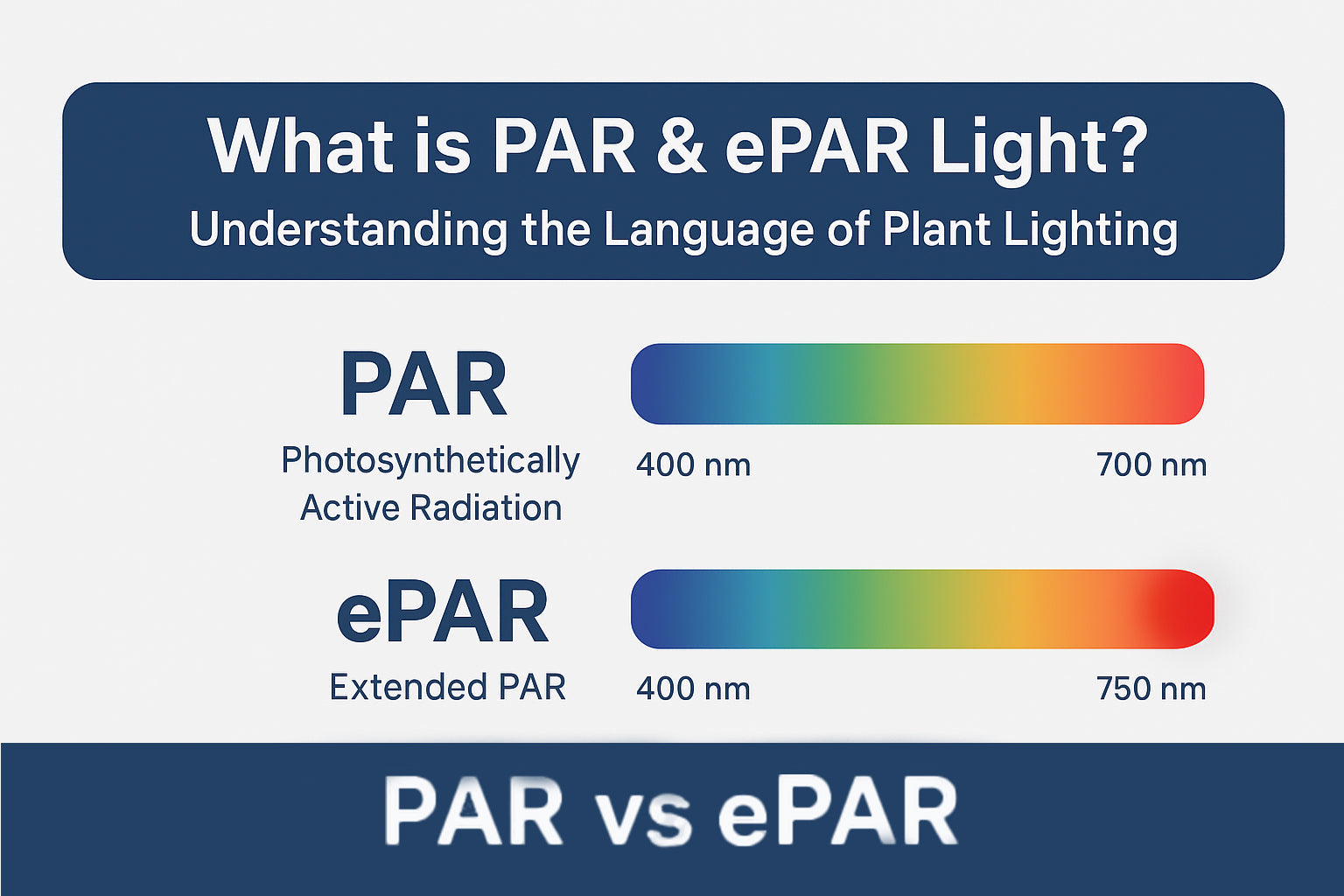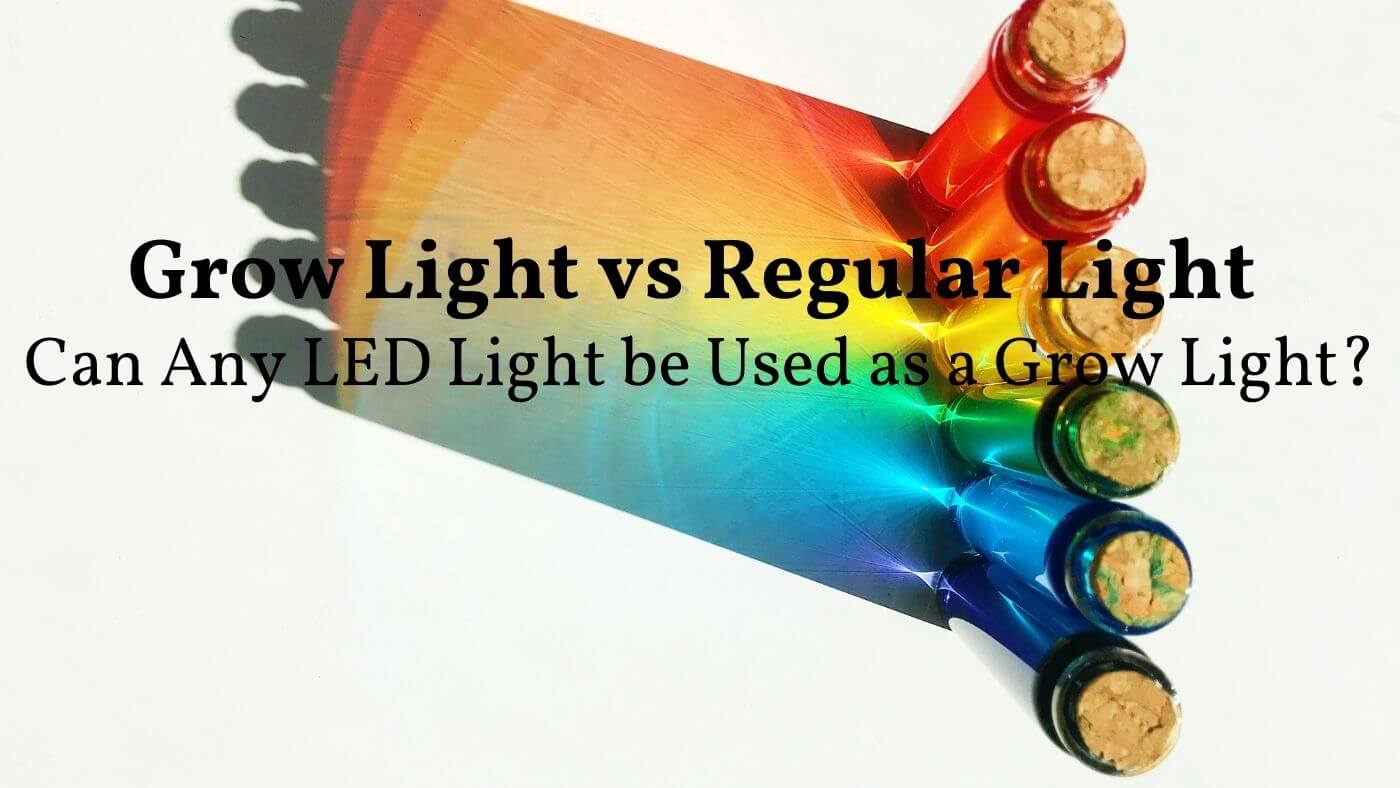
Grow Light vs Regular Light: Can Any LED Light Grow Plants?
With the rise of indoor gardening, grow lights have become increasingly popular. A common question among beginners is whether any LED light can be used as a grow light.
The answer is no—not all LED lights can function as grow lights. Plants require specific wavelengths of light for photosynthesis, primarily blue light (400–500 nm) and red light (600–700 nm).
Through evolution, plants have adapted to efficiently utilize the full spectrum of sunlight for growth. LED grow lights are specifically designed to mimic the sun's spectrum, whereas regular LED lights typically lack these essential wavelengths and are only suitable for general illumination.
If you're interested in LED grow lights, read on to learn more. In this article, Medic Grow will provide an in-depth analysis of the differences between LED grow lights and standard LED lights.
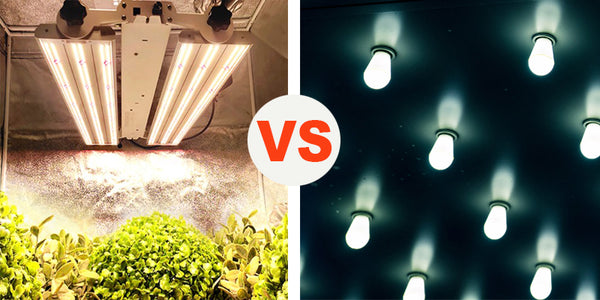
Main Content:
- 1. Can Any LED Light Be Used as a Grow Light?
- 2. Grow Light vs Regular Light
- 3. What LED Grow Light Should I Buy?
- 4. How to Use Grow Lights for Optimal Results?
- 5. Conclusion
- 6. FAQs About Grow Light vs Regular Light
Can Any LED Light Be Used as a Grow Light?
Not all LED lights can be used as grow lights. While LED lights may support plant growth to some extent, specialized LED grow lights deliver better results by providing the precise light spectrum and intensity required for plant development.
Specifically, LED grow lights are equipped with an optimized ratio of red and blue light, which significantly enhances photosynthesis, promoting faster growth, higher yields, and healthier plants.
As highlighted by the renowned plant science journal BMC Plant Biology, "Blue light (400–500 nm) and red light (600–700 nm) are the most effective wavelengths for photosynthesis."
Standard LED lights, on the other hand, often lack the essential wavelengths—particularly blue and red light—and the necessary intensity for plant growth. This deficiency can negatively impact plant development.
Therefore, while any LED light might contribute to plant growth, specialized LED grow lights, like those from Medic Grow, ensure your plants truly thrive.
Grow Light vs Regular Light
The key differences between LED grow lights and regular lights include factors such as light spectrum, intensity, energy efficiency, heat dissipation, and lifespan. Here's how they impact plant growth and performance.
Spectrum
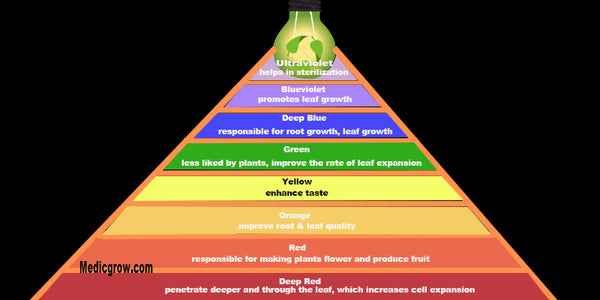
Many LED Grow Light manufacturers dedicate significant resources to researching light colors and wavelengths to create optimal grow lights that combine red, blue, infrared, ultraviolet, and green light. Here’s how these different light types contribute to plant growth.
Red and Blue Light
Blue and red wavelengths are critical for plant growth, with each playing a unique role. Blue light encourages leafy development, while red light supports flowering.
In the seedling and vegetative stages, plants benefit from more blue light to promote root and leaf growth. As plants transition to the flowering stage, they require increased red light to stimulate blooming.
A study published in BMC Plant Biology found that plants exposed to a combination of red and blue light developed thicker leaves and had higher photosynthetic efficiency compared to those grown under standard white LEDs.
Besides, many LED grow lights, like those from MedicGrow, offer adjustable full-spectrum light to cater to these different stages of growth, allowing growers to fine-tune the light spectrum for optimal plant development and maximize yields throughout the growth cycle.
UV Light
Ultraviolet (UV) light plays a vital role in triggering metabolic changes in plants, promoting the accumulation of beneficial compounds such as carotenoids. Research shows that moderate UVA exposure can increase plant dry weight by 5% to 15%. Advanced LED grow lights often incorporate UV strips to boost these effects, a feature absent in standard LEDs.
Green Light
Green light has the ability to penetrate deeper into the plant canopy, reaching lower leaves that might otherwise receive insufficient light. This deeper light penetration ensures more uniform growth, improved overall plant health, and increased biomass production.
According to research published in Frontiers in Plant Science, green light can boost plant yield by 5% to 20%. Full-spectrum grow lights, which include green light, provide a significant advantage over standard LEDs by ensuring all parts of the plant receive adequate light, resulting in healthier and more productive growth.
IR Light
Infrared (IR) light (700–775 nm) promotes deeper leaf penetration and cell expansion. Studies indicate that far-red light can increase total biomass by 10% to 30% and stimulate lateral branch growth, creating more flowering sites and potentially higher yields.
In summary, the comprehensive light spectrum provided by LED grow lights is highly beneficial for indoor plant growth. In contrast, standard LED lamps lack the necessary wavelengths for effective photosynthesis.
Light Intensity
Light intensity refers to the amount of light (measured in photons) passing through a unit area per second, typically quantified as PPFD in µmol/m²/s. This measure is crucial for evaluating how much usable light a plant receives for photosynthesis.
For plants to photosynthesize efficiently and develop properly, high light intensity is essential. Regular LEDs, however, focus on lumens, which only measure brightness as perceived by the human eye, not the light wavelengths plants need for growth.
Lumens are therefore not a suitable indicator of light intensity for plant growth. Regular LEDs usually have low PPFD values—often under a few tens of µmol/m²/s—which are inadequate for promoting healthy growth, especially for high-light-demanding plants.
In contrast, LED grow lights are engineered to provide PPFD values in the optimal range of 400 to 1300 µmol/m²/s, ensuring sufficient light intensity for photosynthesis, which promotes vigorous growth and supports the flowering stage.
Efficiency
Ordinary LED lights, like incandescent bulbs, consume little energy but are highly energy inefficient, with lighting efficiencies ranging from just 0.7% to 2.6%. This means up to 98% of their energy is wasted, contributing little to plant growth.
While LED grow lights may use more electricity than standard LEDs, they convert this energy far more efficiently into promoting photosynthesis.
This results in faster growth, healthier plants, and higher yields. Therefore, investing in LED grow lights leads to better energy utilization and more substantial returns in plant cultivation.
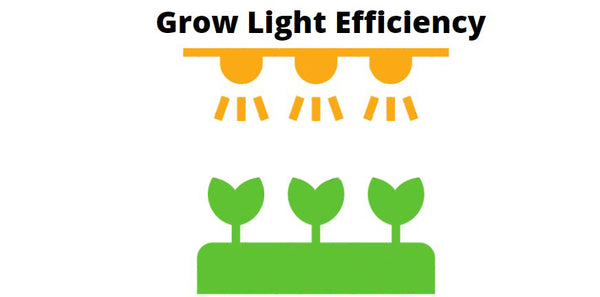
Heat Dissipation
Many regular LEDs produce significant heat and must be positioned at least 24 inches above plants to avoid the risk of light bleaching and often require supplemental ventilation systems to manage the excess heat.
In contrast, modern LED grow lights, such as those from MedicGrow, are engineered with advanced aluminum heat dissipation technologies. These lights significantly reduce heat output by 40-50% compared to traditional LEDs or HID (High-Intensity Discharge) lights.
As a result, LED grow lights can be placed closer to plants—typically 12-18 inches—without risking heat damage. This closer proximity enhances light absorption, promoting faster growth and higher-quality blooms.
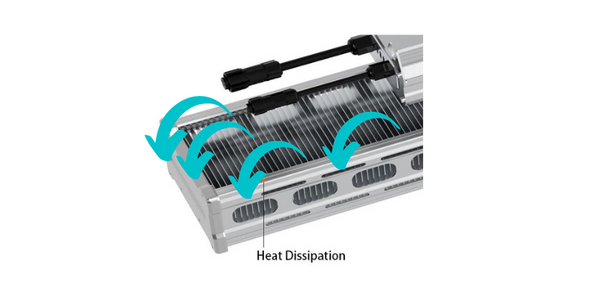
Life Expectancy
The lifespan of LED grow lights significantly surpasses that of regular LEDs. LED grow lights are built to last over 50,000 hours, thanks to their high-quality diodes and advanced heat dissipation technology.
In contrast, regular LEDs typically have a lifespan of 15,000 to 50,000 hours. They often lack specialized cooling design and lack the use of higher-quality components leading to more frequent replacements.
For indoor growers, this frequent replacement can disrupt the consistency of light exposure and negatively impact plant growth cycles.
By investing in high-quality LED grow lights, growers benefit from greater reliability, ensuring stable lighting conditions throughout the entire growth process, which ultimately leads to healthier plants and higher yields.
What LED Grow Light Should I Buy?
LED grow lights have outperformed traditional lighting for plant cultivation, but selecting the right combination of wavelengths is essential to achieving optimal results for your specific plants.
Different plants and plant growth stages have unique light spectrum needs—what works for tomatoes, for example, may not be as effective for other species. This is where adjustable spectrum grow lights become invaluable.
These lights allow you to customize the wavelength output to suit both the type of plant and its growth stage, from seedling to flowering, ensuring the best possible development throughout the plant’s life cycle.
Manufacturers like Medic Grow offer adjustable full-spectrum LED grow lights, such as the NEO-1000W, which give growers the ability to fine-tune the light spectrum and intensity for different growth stages.
If you're looking for an LED grow light, go for Medic Grow! It’s an excellent choice for maximizing plant growth across various species and stages of development!
How to Use Grow Lights for Optimal Results?
To maximize the effectiveness of your grow lights and promote healthier plant growth, it's important to keep several key factors in mind:
- Choose the Right Spectrum: Opt for full-spectrum grow lights that cater to all stages of plant growth. Blue light is particularly important during the vegetative phase and red light is critical during the flowering and fruiting stages.
- Proper Placement: Maintain an optimal distance between the grow lights and the plant canopy—generally 12 to 24 inches. Placing lights too close can cause leaf burn while positioning them too far away can result in weak, leggy plants.
- Light Duration: Different growth stages require varying light schedules. Seedlings typically benefit from 16 to 18 hours of light per day, while flowering plants flourish with a 12-hour light and 12-hour darkness cycle.
- Monitor Environment: Grow lights can affect temp and humidity levels in your grow space, so it's important to monitor these closely. Ensure proper ventilation, and use fans, air conditioning, or humidifiers to maintain an optimal environment for plant growth.
- Rotate and Trim Plants: Regularly rotating your plants ensures they receive even light. Trimming excess leaves and branches also improves light penetration to lower parts of the plant, boosting overall growth and yield.
By following these practices, you'll create an optimal growing environment that supports healthier, more productive plants and better results from your grow lights.
Conclusion
In conclusion, there are significant differences between regular LED lights and grow LED lights in terms of spectrum, light intensity and efficiency. While regular LED lights can help plants grow, it's important to use grow lights with a specially designed spectrum and intensity that is intended to support plant growth.
Related Posts:
FAQs About Grow Light vs Regular Light
1. Can Any LED Light Be Used as a Grow Light?
Not all LED lights are suitable for supporting plant growth. For plants to thrive, they need full-spectrum LED lights that mimic natural sunlight, providing the right balance of blue and red wavelengths crucial for various growth stages.
2. Can Any LED Light Grow Plants?
Yes, you can use LED lights to grow plants, but it's important to use LED grow lights specifically designed for this purpose. Unlike regular LEDs, LED grow lights provide the essential light intensity, red and blue wavelengths needed for plant photosynthesis and healthy growth.
3. What Is the Difference Between LED Lights and Grow Lights?
LED grow lights and regular LED lights differ mainly in light intensity (PPFD) and spectrum. LED grow lights provide a full spectrum and high light intensity, typically measured in PAR, while regular LEDs emit white light wavelengths and are usually measured in lumens.
Featured Products
Blog Posts
Contact Us with Any Idea!
- Choosing a selection results in a full page refresh.
!
































